Abstract
The case notes of 20 infants with hyperkalaemia (defined as two successive serum potassium measurements of greater than 7.5 mmol/l) were reviewed. The incidence of hyperkalaemia was also looked at in an unselected population of 200 low birthweight infants. The mean gestational age of the 20 affected infants was 29 weeks and the mean birth weight 1235 g. The incidence of hyperkalemia in the cohort of 200 infants weighing less than 1500 g at birth was 3.5%. Hyperkalaemia was associated with a high incidence of cardiac arrhythmia (60%), impaired renal function (50%), and changes on cerebral ultrasonography (88%). Hyperkalaemia responds slowly to conventional treatment with dextrose, insulin, and exchange resins. There is a close temporal relation in some infants between hyperkalaemia and cardiac arrhythmias and periventricular leukomalacia, suggesting a causal association.
Full text
PDF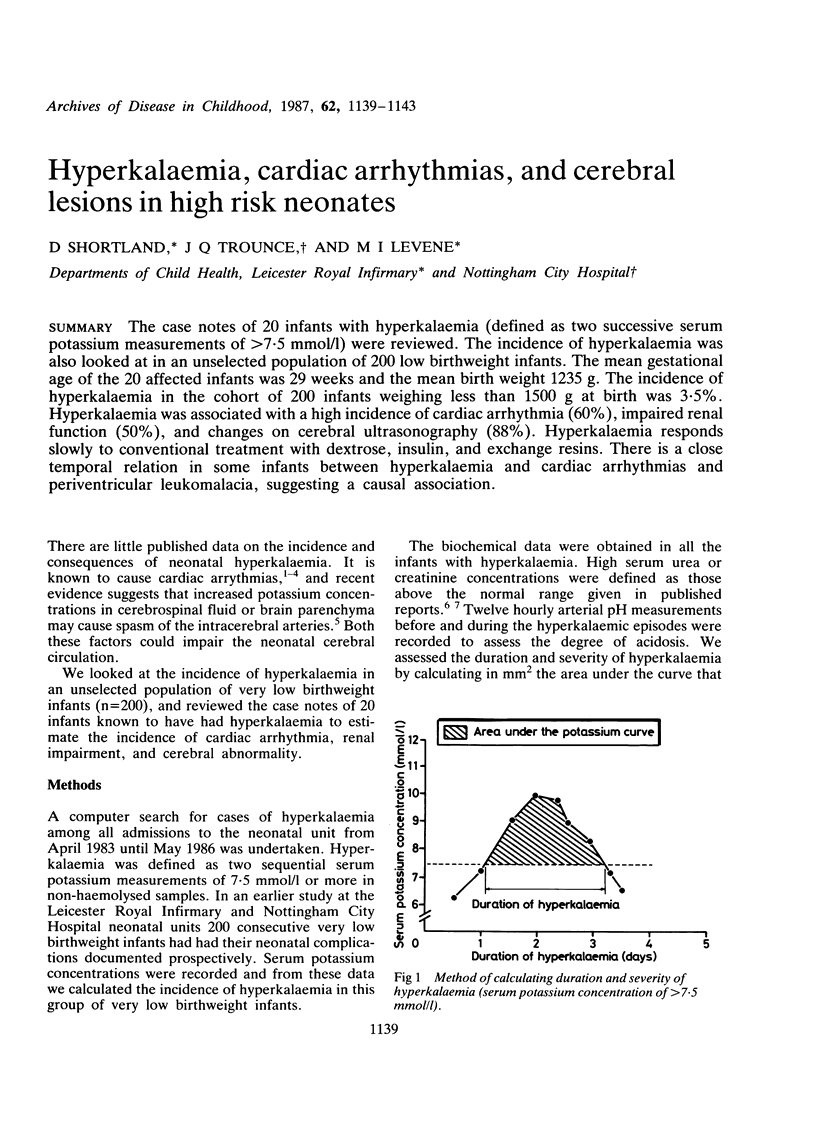
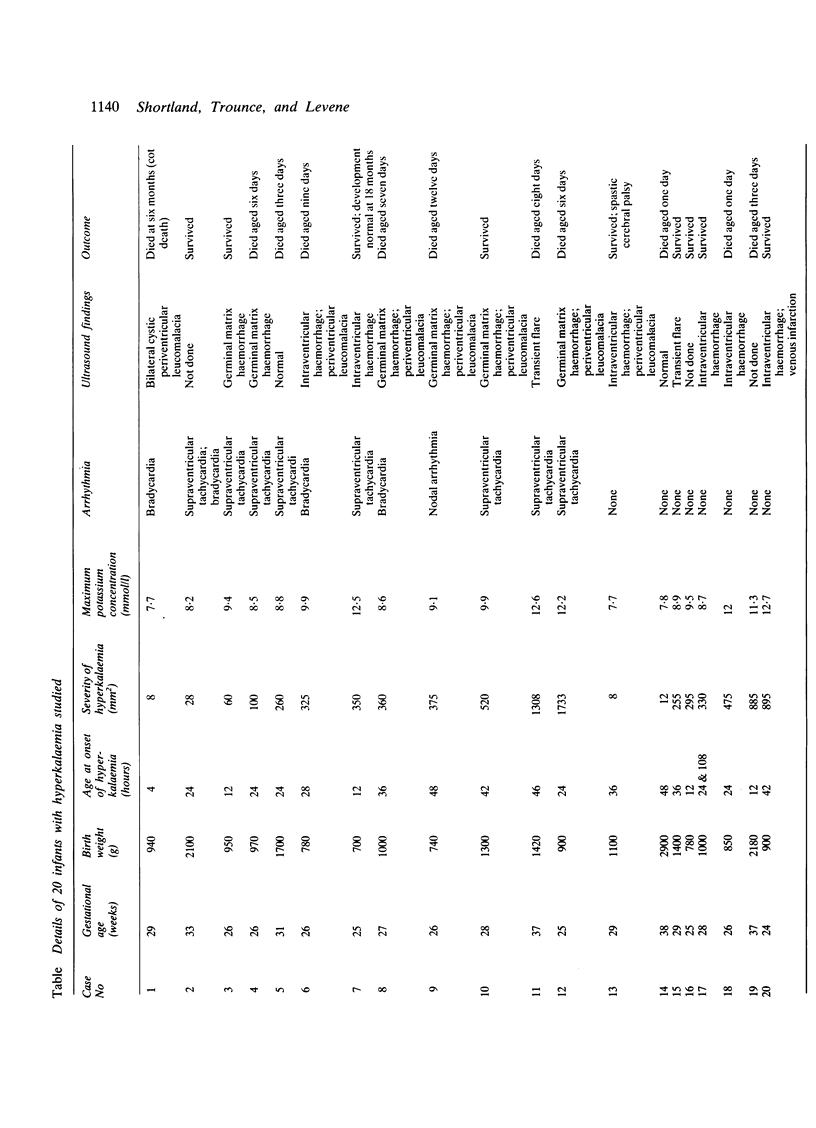
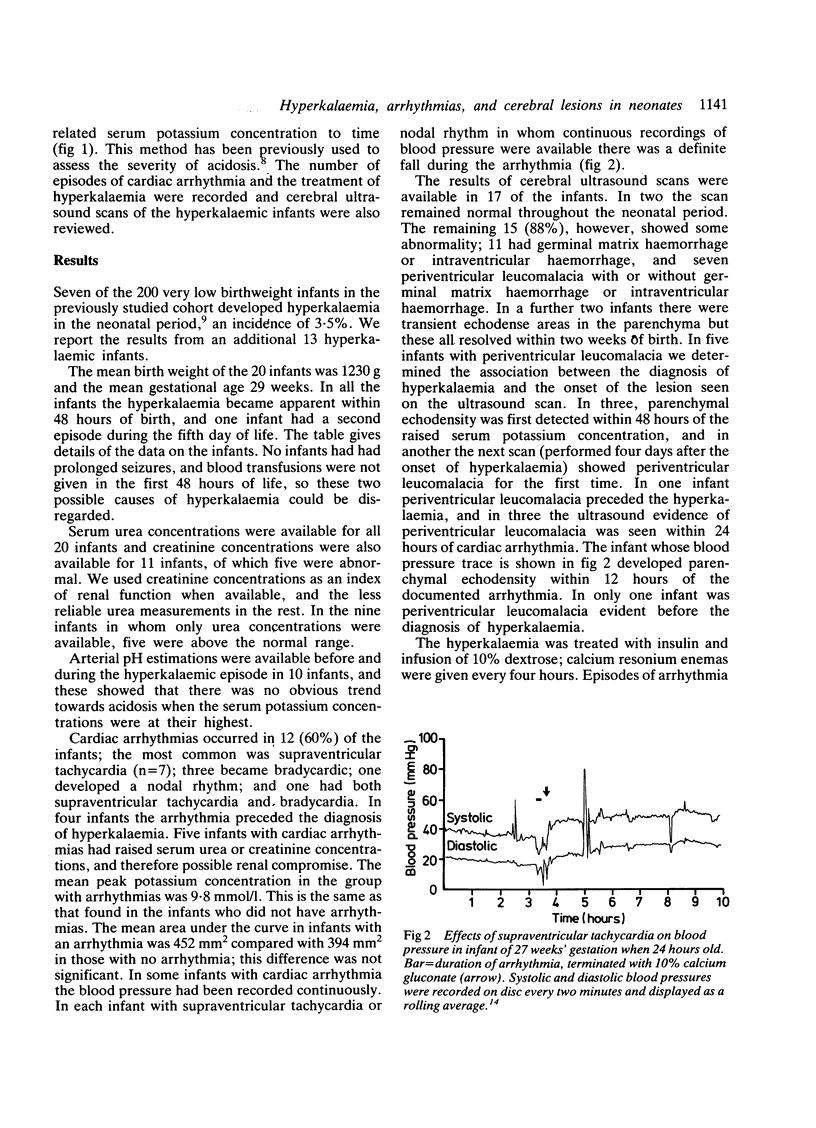
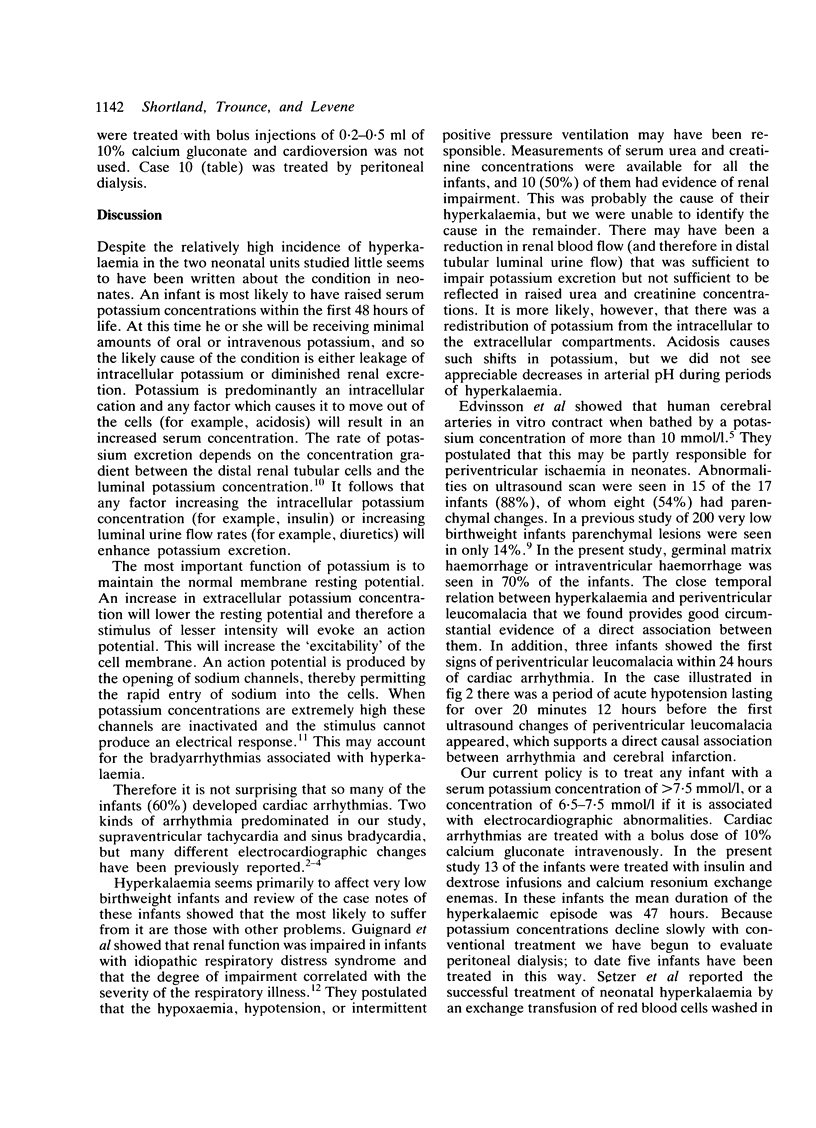
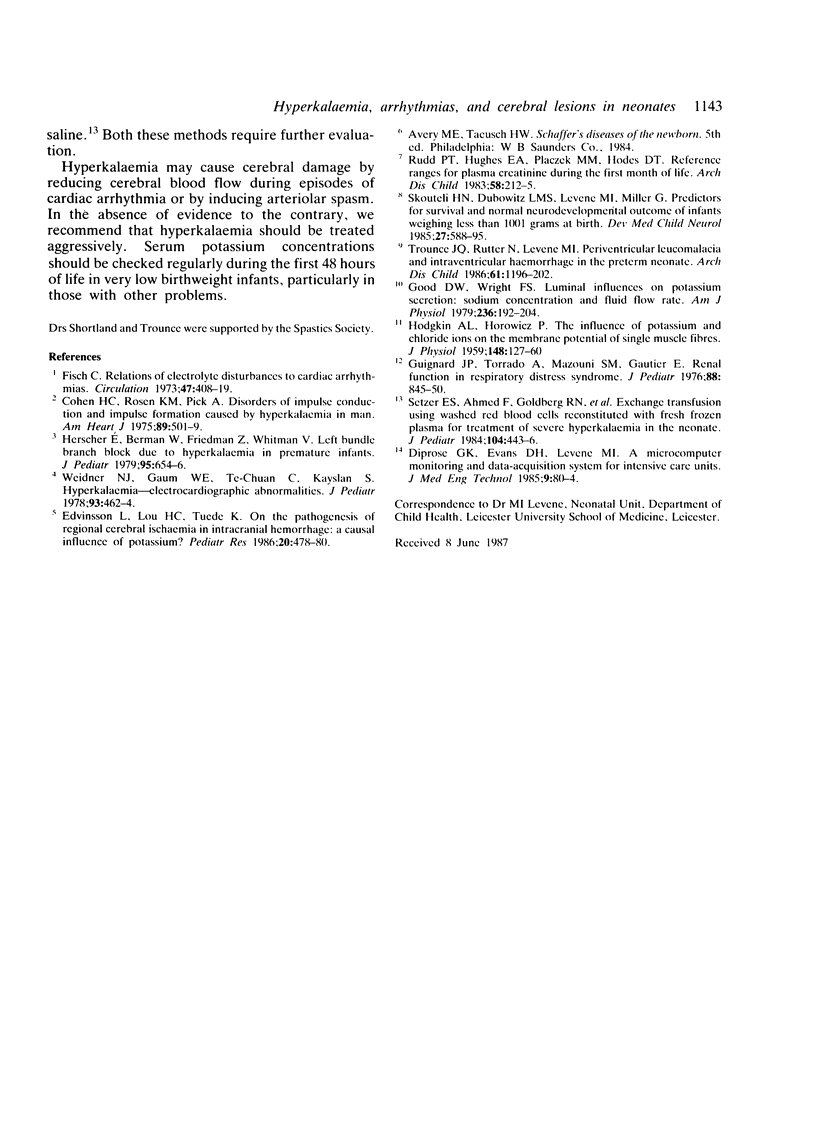
Selected References
These references are in PubMed. This may not be the complete list of references from this article.
- Cohen H. C., Rosen K. M., Pick A. Disorders of impulse conduction and impulse formation caused by hyperkalemia in man. Am Heart J. 1975 Apr;89(4):501–509. doi: 10.1016/0002-8703(75)90158-1. [DOI] [PubMed] [Google Scholar]
- Edvinsson L., Lou H. C., Tvede K. On the pathogenesis of regional cerebral ischemia in intracranial hemorrhage: a causal influence of potassium? Pediatr Res. 1986 May;20(5):478–480. doi: 10.1203/00006450-198605000-00019. [DOI] [PubMed] [Google Scholar]
- Fisch C. Relation of electrolyte disturbances to cardiac arrhythmias. Circulation. 1973 Feb;47(2):408–419. doi: 10.1161/01.cir.47.2.408. [DOI] [PubMed] [Google Scholar]
- Guignard J. P., Torrado A., Mazouni S. M., Gautier E. Renal function in respiratory distress syndrome. J Pediatr. 1976 May;88(5):845–850. doi: 10.1016/s0022-3476(76)81129-8. [DOI] [PubMed] [Google Scholar]
- HODGKIN A. L., HOROWICZ P. The influence of potassium and chloride ions on the membrane potential of single muscle fibres. J Physiol. 1959 Oct;148:127–160. doi: 10.1113/jphysiol.1959.sp006278. [DOI] [PMC free article] [PubMed] [Google Scholar]
- Herscher E. S., Berman W., Jr, Friedman Z., Whitman V. Left bundle branch block due to hyperkalemia in premature infants. J Pediatr. 1979 Apr;94(4):654–656. doi: 10.1016/s0022-3476(79)80045-1. [DOI] [PubMed] [Google Scholar]
- Rudd P. T., Hughes E. A., Placzek M. M., Hodes D. T. Reference ranges for plasma creatinine during the first month of life. Arch Dis Child. 1983 Mar;58(3):212–215. doi: 10.1136/adc.58.3.212. [DOI] [PMC free article] [PubMed] [Google Scholar]
- Setzer E. S., Ahmed F., Goldberg R. N., Hellman R. L., Moscoso P., Ferrer P. L., Noto T. A. Exchange transfusion using washed red blood cells reconstituted with fresh-frozen plasma for treatment of severe hyperkalemia in the neonate. J Pediatr. 1984 Mar;104(3):443–446. doi: 10.1016/s0022-3476(84)81114-2. [DOI] [PubMed] [Google Scholar]
- Skouteli H. N., Dubowitz L. M., Levene M. I., Miller G. Predictors for survival and normal neurodevelopmental outcome of infants weighing less than 1001 grams at birth. Dev Med Child Neurol. 1985 Oct;27(5):588–595. doi: 10.1111/j.1469-8749.1985.tb14130.x. [DOI] [PubMed] [Google Scholar]
- Trounce J. Q., Rutter N., Levene M. I. Periventricular leucomalacia and intraventricular haemorrhage in the preterm neonate. Arch Dis Child. 1986 Dec;61(12):1196–1202. doi: 10.1136/adc.61.12.1196. [DOI] [PMC free article] [PubMed] [Google Scholar]
- Weidner N. J., Gaum W. E., Chou T. C., Kaplan S. Hyperkalemia-electrocardiographic abnormalities. J Pediatr. 1978 Sep;93(3):462–464. doi: 10.1016/s0022-3476(78)81163-9. [DOI] [PubMed] [Google Scholar]


